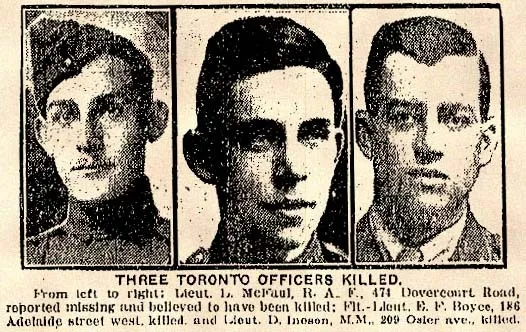1918-09-03: The aircraft was attacked by 5 enemy aircraft and 2Lt Boyce was killed. The pilot, Lt Stephen Crosfield (British) landed the aircraft safely.
Boyce, Edward Francis (Second-Lieutenant)
Killed in Action 1918-September-03


Birth Date: 1897-November-19
Born: Toronto, Ontario
Parents: George Frederick & Julia Boyce
Spouse: unmarried
Home: Toronto, Ontario.
Enlistment:
Enlistment Date: unkown date
Service
RAF
Unit
25 (B) Sqn- Squadron (RAF)
Feriens Tego Striking I defend
Base
France
Rank
Second-Lieutenant
Position
Gunner-observer
Service Numbers